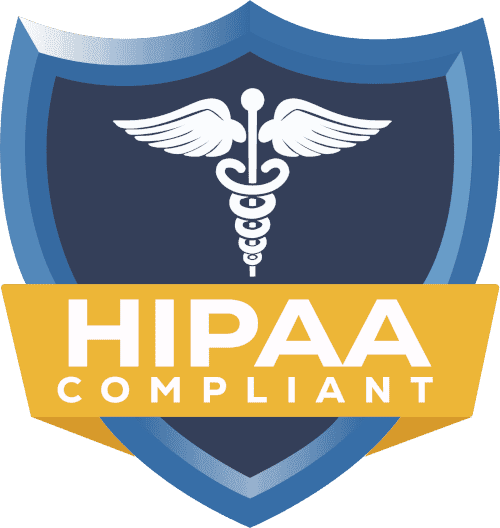What is Physician Credentialing: A Comprehensive Guide for Healthcare Professionals

Physician credentialing forms the backbone of the quality assurance system in the healthcare industry. Thus, this process, typically viewed as just administrative paperwork, goes a long way in protecting patients, facilities, and even providers. This article will explore what physician credentialing is and how it happens to be important for every stakeholder in the healthcare ecosystem.
What is Medical Credentialing?
Medical credentialing refers to an organized system for checking the qualifications of physicians and other healthcare providers. In detail, thorough verification of available education, training, experience, and competence required by a provider to ensure safe and sound practice of medicine comes under this processes generally includes:
- Medical education and training
- Residency and fellowship completion
- Board certifications
- State medical licenses
- Hospital privileges history
- Work and practice history
- Malpractice insurance coverage
- Professional references
- Any history of malpractice claims or disciplinary actions
This thorough verification builds a trust foundation between healthcare providers, facilities, patients, and insurance companies.
What Is Provider Credentialing and Why Does It Matter?
Provider credentialing is not limited to physicians but extends to all healthcare practitioners whose qualifications need verification. It includes nurse practitioners, physician assistants, therapists, and other allied health professionals.
The credentialing of providers serves multiple critical functions:
For Patients
- Ensure care is delivered by qualified, competent providers
- Protect them from potential harm by unqualified practitioners
- Build trust in the healthcare system
- Make informed choices about their healthcare providers
- For Healthcare Organizations
- Meets regulatory and accreditation standards
- Reduces liability risk
- Keeps quality standard intact
- Protect organizational reputation
- Cover organizational activities at state and federal levels
For Providers
- Update professional credibility
- Make possible joining insurance networks
- Hospital practicing privileges left
- Career advancement opportunities create here
- Patient, peer qualification verification gives here
The Provider Credentialing Process: Key Components
In most cases, the steps involved in the credentialing process are:
1. Application Submission
The provider submits an application with all required documentation to each organization.
2. Primary Source Verification
Information about a subject individual is obtained directly from original sources by the credentialing entity:
- Medical schools
- Residency programs
- Fellowship programs
- Licensing boards
- Board certification organizations
- Employers (and their names) licensed to practice medicine)
- Malpractice insurance companies)
3. Database Checks
Queries conducted through various databases include:
- National Practitioner Data Bank (NPDB)
- Office of Inspector General (OIG) exclusion list
- State medical board databases
- Medicare/Medicaid exclusion lists
4. Committee Review
A credentials committee goes over the information and suggests whether to approve it.
5. Privileging Decisions (for hospitals)
In hospital credentialing, particular clinical privileges are granted according to qualifications and needs of the facility.
6. Ongoing Monitoring and Recredentialing
Regular recredentialing, which is usually done every 2-3 years, ensures continued compliance with the standards.
Credentialing Insurance: Understanding the Connection
Credentialing insurance is the particular verification process required by the insurance companies of their providers prior to admitting them into their networks as in-network providers. This process becomes very crucial for the following reasons:
Reimbursement
The providers will not get the direct payment from the insurance companies if there is no credentialing and will have to bill patients as out-of-network providers.
Patient Access
Normally, patients prefer seeing in-network providers which provides a viable practice an array of financial incentives.
Quality Assurance
Insurance firms utilize credentialing to confirm that their affiliated members obtain treatment from competent providers who satisfy their guidelines.
Regulatory Compliance
In numerous states, it is a necessity for insurance firms to validate the credentials of their providers as an element of their regulatory duties. Generally, the duration for the insurance credentialing procedure is about 60-180 days, depending on the insurance firm and how complete the application of the provider is.
Credentialing vs. Privileging: Understanding the Difference
Though often spoken of in the same breath, credentialing and privileging are two different facets of the process whereby qualifications are verified:
Credentialing
- Verification of qualifications, training, and background
- Establishes if a provider has met minimum standards
- Valid in insurance networks and healthcare facilities
Privileging
- Defines specific procedures and services a provider can perform
- Based on proven competence and past experience
- Rarely applies outside a hospital or facility setting
- Much more granular & specific to clinical activities
Challenges in the Physician Credentialing Process
Challenges of Credentialing for Providers and Organizations
Time Consumption
Typically, it takes 60-180 days from the date of application to approval, which can delay revenues for new providers.
Administrative Burden
Collecting and maintaining all necessary documentation consumes huge resources and significant attention to detail.
Complex Requirements
Each organization has unique criteria and processes, requiring careful tracking and management.
Frequent Changes
In all circumstances of the providers’ change, there is ongoing administrative work to be done. Technology does not support the needed operations.
Technological Limitations
Many organizations continue to use paper or old electronic systems, which creates inefficiencies.
The Evolution of Medical Credentialing
Credentialing continues to evolve:
Increased Digitization
Electronic credentialing systems are facilitating the process and reducing paperwork.
Centralized Verification
Organizations like CAQH (Council for Affordable Quality Healthcare) provide central repositories of provider information.
Standardization Efforts
Industry groups works toward standardizing credentialing requirements across organizations.
Delegated Credentialing
Some health systems credential for insurance companies, which reduces duplication.
Telehealth Considerations
The growth of telehealth has created new issues with credentialing, especially for providers who practice across state lines.
Best Practices for Efficient Credentialing
Providers can optimize their credentialing experience by:
Creating a Credentials File
Keep all required documents in a separate folder and maintain digital copies for easy access.
Being Thorough and Accurate
Complete all applications in full and accuracy, as delay occurs due to error or omission which is substantial.
Starting Early
Credentialing process to be began 3-6 months prior to practicing at new location or with new insurance panel for recommended timing.
Using a Tracking System
Spreadsheet creation or use of credentialing software for monitoring application status and deadlines is recommended.
Considering Professional Help
Credentialing specialists are highly regarded by many providers as they manage this complex process.
Conclusion
Provider credentialing represents a fundamental quality assurance mechanism in healthcare. While it can be administratively demanding, understanding what medical credentialing is and approaching it strategically ensures providers can focus on their primary mission: delivering excellent patient care.
Whether you are a new physician going into practice, an established provider joining a new facility, or an administrator running a credentialing program, having an appreciation for thorough verification helps maintain the integrity and quality in our healthcare system. The time and effort spent in proper credentialing will eventually pay returns for all those concerned in the process of delivering healthcare, from the providers and facilities to the insurers and, most importantly, the patients.



















